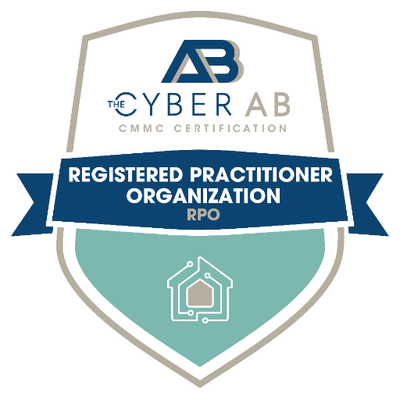
Getting Real With AI: Straightforward Uses for Your Business
AI-driven, AI-fueled, AI this, AI that. You’re probably fed up with companies throwing these terms around without any real explanation of how AI can actually help.
But with a market expected to grow to $407 billion by 2027, there must be something behind all this jargon. We’ve heard how AI can increase business efficiency, enhance decision-making, and improve risk management. Admittedly, that all sounds great, but wouldn’t it be nice to know, well, what it actually means?
We certainly thought so, so we’ve compiled some concrete use cases to kickstart your own AI revolution. Enjoy…
Narrowing Down AI
While AI has certainly achieved impressive levels, it hasn’t reached the full-blown science-fiction levels some might imagine…at least, not yet.
What we see today is known as narrow AI. Narrow AI is designed to perform specific tasks or handle a limited range of functions. These are your AI gadgets and gizmos like ChatGPT or Microsoft Copilot. These two are also examples of large language models (LLMs), advanced systems capable of understanding and generating text. Other examples of narrow AI include Siri, Alexa, weather forecasting, and even Spotify’s recommendation engine.
Narrow AI is everywhere, and it helps us with a lot of things, but if you want to get the most out of AI – in your own life, at your business, wherever – the first step is developing a cleareyed view of its limitations.
The AI Limit
It’s easy to intuit the natural limitations of most tools – you wouldn’t use a hammer like a screwdriver. Grasping AI’s limitations is a bit trickier, but an absolute must if you’re looking to leverage AI effectively.
Not So Common Sense: At this stage, AI lacks what we might call common sense or general intelligence. When you ask ChatGPT a question, it doesn’t “think” about the answer; it pieces together a response generated from a vast database of information. In slightly more specific terms, it makes reasonable predictions about which words “make sense” in a given context.
Creatively Limited: Generative AI (AI that creates content – texts, images, etc.) operates on patterns learned from training data. This means the content this type of AI produces is going to be limited by the scope and variety of the patterns in the data it was trained on. To boil it down, generative AI cannot transcend the data used to train it, so relying on this technology for truly creative leaps or paradigm shifts is, at this point, premature.
Truth Not Guaranteed: When using AI tools like LLMs, remember they can – and often do – get things wrong. This happens because generative AI’s “goal” isn’t truth, but recreating patterns from its training data. Just as you wouldn’t trust every source online, approach AI responses with healthy skepticism.
Ethically Gray: AI often pulls information from various sources, which sometimes leads to plagiarism claims or privacy issues. When using AI, it’s crucial to tread carefully and be aware of your AI’s data source.
At this point, you might get the sense we’re trying to dissuade you from using AI. But this couldn’t be further from the truth. We know you’re going to use AI. Our goal is to help you use it well, which involves, among other things, recognizing its limits.
Using AI
While you can use public LLMs like ChatGPT with minimal setup, maximizing AI’s potential requires a more strategic approach. Every company will face its own challenges with AI implementation, but the following framework can help you avoid some common pitfalls.
Identify Your Goals: Ask yourself: What do I need help with? Whether you want an AI chatbot for customer service or an automation tool to send out marketing emails, this is your opportunity to define the areas of your business where AI would be the most helpful.
Gather Your Data: AI needs data to learn from and make predictions. This data can range from large spreadsheets to simple Word documents. Your job (or your IT team’s) is to compile and organize this data (AI can help with this too!).
For example, if you’re implementing AI for an email campaign, you’ll need to provide relevant data such as sales records and customer information. Organizing this data helps your AI analyze patterns and customer behaviors. The result: email campaigns that get better results.
Tools for the Job: Take some time to look into the tools available for your specific needs. This step is where you actually bring AI into play. It can be challenging – especially for SMBs stepping into AI for the first time – and we’d recommend consulting a trusted expert for guidance.
Ensure Compliance: Like all aspects of your business, your AI must adhere to regulatory compliance requirements. Unmonitored databases or information sources – where your AI pulls data from – could lead to sensitive information leaks or other privacy issues.
Integrate and Train: Have your IT team integrate your AI into your existing systems – again, this can be difficult for teams without proper expertise so consider reaching out to an expert MSP like us. While implementation is underway, train the rest of your team on the new AI tools.
Monitor: This stage is where the magic will really start to happen. Tweaking and adjusting are necessary for getting AI to do exactly what you want it to do, so take an active interest in your AI, monitoring its performance and testing its abilities. Having a trusted IT partner with AI expertise is obviously a tremendous help at this stage.
Prioritize: Start small, focus on your immediate needs, and build from there. One of the main ways we help clients with AI is in providing guidance on what to tackle when. A clear AI roadmap helps them set an agenda and start taking those all-important first steps.
Now for the really fun stuff: proven ways AI can help your business.
AI Use Cases
AI is here, and it’s already transforming how businesses operate, making it possible to do more with less. To help you get in on the action, we’ve compiled some practical AI applications that are easy to implement and deliver quick results for small and medium-sized businesses (SMBs).
Content Generation
There is a lot AI can do for content generation. LLMs like ChatGPT or Microsoft Copilot can offer some serious mileage, helping you generate professional content faster than ever.
A word of caution: While AI is excellent for generating initial drafts, a human touch is essential to elevate and refine your content. Remember the limitations of AI – consider it a powerful drafting tool rather than a final solution.
Examples include:
- Research & Drafting: AI can launch you out of your writer’s block by providing great starting points for curated content.
- Image Generation: Tools like DALL·E and Midjourney can create visual content based on text, helping you to spice up your content with great imagery.
Customer Service
Delivering top-notch customer service demands considerable time and effort. AI is here to help. A study by Stanford University and MIT found that support agents using AI tools saw a 14% increase in productivity – a significant boost that can accumulate quickly. When customers are waiting, you’ll be happy AI has your back.
Examples include:
- Chatbots: Chatbots are available 24/7 and can answer any question while helping guide tricky customers to the service or product that best fits their needs.
- Personalized recommendations: AI tools can recommend products and solutions based on a customer’s history, leading to fast and efficient sales.
- Customer feedback analysis: By analyzing reviews, surveys, and other customer feedback, AI can help your team make informed decisions about pricing, sales strategies, and product improvements.
Human Resources
AI can help HR departments stay organized and efficient through various tracking capabilities.
Examples include:
- Hiring: AI can organize resumes based on specific criteria, enabling quicker interviews focused on candidates who best match your company’s needs.
- Performance Tracking: AI can track employee performance using data from project management tools, providing insight into productivity and progress.
- Onboarding/Training: AI can guide new employees through personalized training programs based on their role and status while also managing the headache of digital paperwork.
Marketing
A lot goes into a successful marketing campaign – time, effort, energy, resources, and talent. With so much on their plate, it’s no surprise that 68% of marketers use AI daily.
Examples include:
- Campaign management: AI can automate email campaigns, target specific audience segments, and track real-time and predictive ad performance.
- Lead generation: Through predictions based on historical data, AI can identify leads most likely to convert to sales, send tailored messages to potential leads, and analyze market trends for future opportunities.
- Ad spend: AI can optimize your marketing budget by dynamically allocating funds to high-performing ads while adjusting spending based on performance data.
Focus on You
There are a lot of ways you can use AI. But don’t focus on the endless possibilities; focus on your needs. AI is a tool, and tools are for solving problems and achieving specific goals. What are your problems? Your goals?
If you need some help with AI strategy or implementation, consider reaching out to The 20 MSP. Our experts can help you get the most from your AI tools – no vague advice, just solutions that move the needle. Give us a call to get started.



